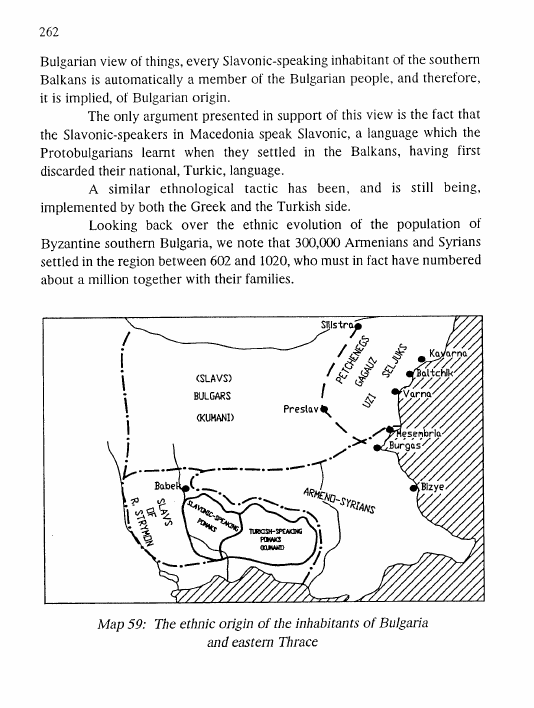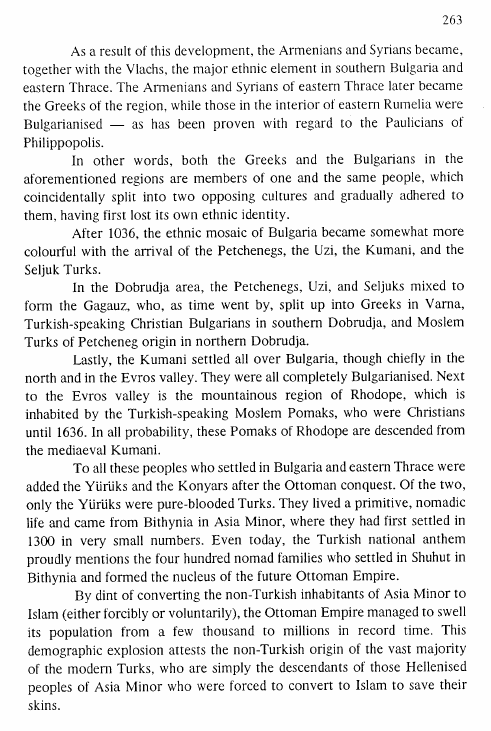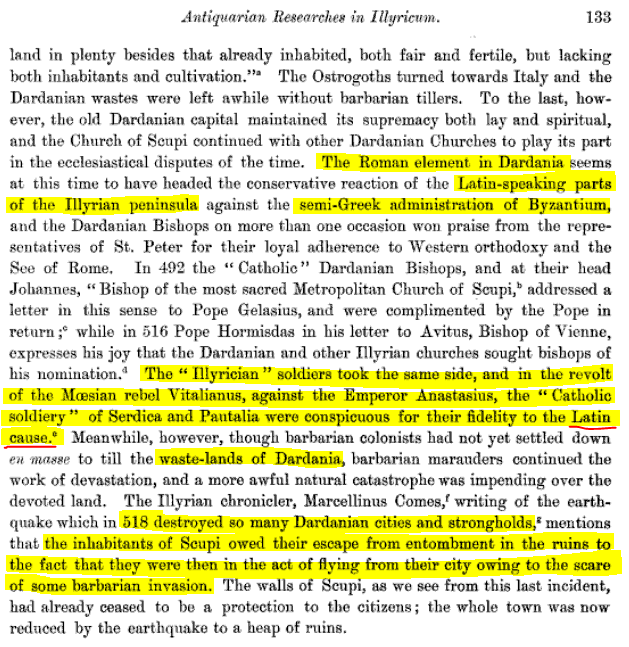and no ancient source ever calls them greeks that is a modern greek state propaganda
Population of Macedonia and Adjacent Areas
Collapse
X
-
Miscegenation happened like it happened all over the world.Originally posted by George S. View PostSo TM what happened to the macedonian population over the hundreds if not thousands of years??Where did they go??Did they leave macedonia?? Did trhey die off??etc What is your opinion based on what you have read.??
Comment
-
-
Just curious as to how many Macedonians there were living in Macedonia during the rule of the Ottomans. Are there any sources in regard to this? I have heard their were around 12 million before the start of the Balkan Wars but I dont know if this is accurate.Originally posted by George S. View PostRegarding the past there were a number of different tribes that were classed as macedonian i think they numbered the sixteen rays of the sun,sixteen tribes.But due to many factors our population has dwindled,worldwide i'm told there are about 5 million macedonians,but there are nearly 400 million who use our cyrillic script.At various times we wre attacked by through wars,famine,black death etc."The moral revolution - the revolution of the mind, heart and soul of an enslaved people, is our greatest task." Goce Delcev
Comment
-
-
I think as time went & there were quite a number of wars ,people would have left or probably were shifted to other lands.I wonder if there are archives in turkey showing the macedonian population at various times thrugh the ottomans."Ido not want an uprising of people that would leave me at the first failure, I want revolution with citizens able to bear all the temptations to a prolonged struggle, what, because of the fierce political conditions, will be our guide or cattle to the slaughterhouse"
GOTSE DELCEV
Comment
-
-
12 million Macedonians in Macedonia is grossly exaggerated. Where did you hear this from? It's sounds like a holiday number grci throw around for that eraOriginally posted by Momce Makedonce View PostJust curious as to how many Macedonians there were living in Macedonia during the rule of the Ottomans. Are there any sources in regard to this? I have heard their were around 12 million before the start of the Balkan Wars but I dont know if this is accurate.
Macedonia went through times of de-population and massive migration movements during the Ottoman era. Namely right after the Karposh uprising. That is when the Ottoman's began to move Mulism Albanians into NorthWestern Macedonia.
Comment
-
-
- Modern Greece: A History since 1821, By John S. Koliopoulos, Thanos M. Veremis
Modern Greece: A History since 1821 is a chronological account of the political, economic, social, and cultural history of Greece, from the birth of the Greek state in 1821 to 2008 by two leading authorities. Pioneering and wide-ranging study of modern Greece, which incorporates the most recent Greek scholarship Sets the history of modern Greece within the context of a broad geo-political framework Includes detailed portraits of leading Greek politicians Provides in-depth considerations on the profound economic and social changes that have occurred as a result of Greece's EU membership
"Other heterolinguals, the descendants of the Slavs of Macedonia, a fair number of whom fought in southern Greece with distinction after the collapse of the uprisings in southern Macedonia in 1821 and 1822, and who were given land to settle in the independent Greek nation-state, were again not differentiated from the rest of the Greeks. They were referred to as "Bulgarians" or "Thracian-Macedonians," and were thought to be Bulgarian-speaking brethren."
The Orthodox Eastern Church, By Adrian Fortescue
"..Greeks publish statistics of Macedonia, nearly all the people they brazenly write as "Hellenes" are really these half-Hellenized Vlachs, men who talk Greek abroad, who sometimes even call themselves Greeks, but who around their own firesides always fall back into the beautiful Romance tongue of their fathers."Last edited by Carlin; 01-11-2013, 08:03 PM.
Comment
-
-
LIVY, ROME AND THE MEDITERRANEAN.
Books XXXI-XLV of The History of Rome from its Foundation.
Translated by Henry Bettenson, Penguin Books. [This translation first published 1976]
Book XLII.49 - 171 B.C.
"... the Macedonian kingdom remained the only great power situated near to Rome, and the only power which might seem able, if anywhere Rome's good fortune should fail her, to arouse in its kings the spirit of the ancient Macedonia."
Book XLIV.45 - Flight of Perseus, 168 B.C.
"First Beroea surrendered, then Thessalonica and Pella, and within two days almost all Macedonia had submitted. The people of Pydna, who were the nearest, had not yet sent envoys; a mixed and unassimilated population of many different nationalities; and the mob which had herded together as a result of the flight from the battlefield, hindered any decision or agreement among the citizens."
Book XLV.30 - Partition of Macedonia, 167 B.C.
"The third region has the notable cities of Edessa, Beroea, and Pella; it includes the warlike people of the Vettii, besides a large settlement of Gauls and Illyrians, who are energetic farmers."
Comment
-
-
a good find carlin."Ido not want an uprising of people that would leave me at the first failure, I want revolution with citizens able to bear all the temptations to a prolonged struggle, what, because of the fierce political conditions, will be our guide or cattle to the slaughterhouse"
GOTSE DELCEV
Comment
-
-
1) Acta S. Demetrii, c. ii.
It is there mentioned as a chief cause of the second Slavonic onslaught on Thessalonica that the city sheltered escaped "mancipia" from the interior of Illyricum. One city only ought not to be allowed to hold out when all the other cities and provinces round had been made void of Roman habitation; "hec autem" (to quote the Latin version) "sola superesset omnesque e Danubii partibus Pannoniaque et Dacia et Dardania reliquisque provinciis et urbibus transfugas reciperet atque in sinu suo foveret." The citizens of Naissus and Serdica are specially mentioned.
See page 140 in Sir Arthus Evans' book for more info and proof of this quote: Antiquarian Researches in Illyricum: Parts I-IV.
2) Nakratzas, pages 262, 263.
The ethnic origin of the inhabitants of Bulgaria and eastern Thrace.

 Last edited by Carlin; 03-24-2013, 09:20 AM.
Last edited by Carlin; 03-24-2013, 09:20 AM.
Comment
-
-
Population of Macedonia and Adjacent Areas.
What follows is a simple listing of historical facts. It will disturb a great number of nationalists all over the Balkans.
Migrations, settlements and colonies, wholesale removal of populations and tribes and their forceful settlement in new regions - as conducted by Roman authorities:
1) Unknown number of "barbarians" settled south of the river Danube in 62 A.D. In the sources, their number is mentioned to be around 100,000 (most likely a 'number' that was conjured up, but nonetheless..). No details about ethnic origin of this population.
2) In 268-270 A.D. a great number of Goths settled south of the river Danube. Many ended up being included in the Roman army.
3) Around 273 A.D., Carpi settled in Scythia Minor province. Scholars have linked the Carpi to a variety of ethnic groups, including Sarmatians, Thracians, Germans, and Celts.
4) In 275 A.D., a great number of Dacians settled south of the Danube.
5) A few years later, 100,000 Bastarnae settled south of Danube. They were followed by Vandals, Gepids, and others.
6) In 282 A.D., 20,000 Sarmatians settled south of Danube.
7) 290 A.D., unknown number of Arabs settled in Thrace.
8) Towards the end of the 290's A.D., additional groups of Carpi and Bastarnae settled south of Danube.
9) 303 A.D., unknown tribe settled in Thrace.
10) 334 A.D., 300,000 Sarmatians, Goths, Iazyges settled throughout Macedonia, Thrace, and Scythia Minor.
11) New transplantation of Goths in 348 A.D.
12) I will stop here, although there are a few additional facts along the same lines. Goths, Sarmatians, Celts, tribes of unknown origin continued to be settled south of Danube (..in different waves).
Comment
-


















Comment